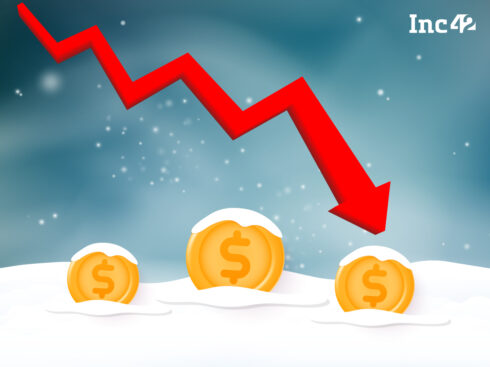
The great Startup bubble has finally burst or so the experts would like us to believe as the evidence (as per them) is mounting day by day. Around 1500+ employees at various startups in India have been laid off. One of the Founders was held hostage in Pune and worst of all, the biggest proof, a certain CEO had to send a strong email to his sales team on missing their quarterly sales target. No its not any ordinary sales target, it was the Quarterly Sales Target. Generally in other sectors, companies fold up when they miss their targets, but damn this VC money, such non-performers are still in business despite missing their top-line goal.
So missing sales targets, 1500 jobs lost and angry employees laying a siege to the CEO!!! What more proof do these moron VCs need, wonder our expert commentator(s) / analyst(s). Interestingly, all these arm chair experts, with all their analysis, comments and advice are no where involved with startups/VC world in any manner, (barring few angel investors) but nonetheless have great insight / perspective on every thing startup, be it business models, path to profitability, unit economics or any other thing under the sun except probably as what makes these dumb VCs from la la land to give up millions of dollars to these kid entrepreneurs who are still learning the ABCD of business. (signs of time, our experts will tell you).
The bubble discussion is no longer a matter of perspective but has now acquired shape of definitive reality, where judgement has already been delivered. Now everybody in the crowd is just waiting with baited breath for the big bang slaying of the unicorns, while the experts like seasoned matadors, are taking their time and using data to bring the Unicorns down, with noises getting louder and louder with chants of “End is nigh” filling the air.
So is the bubble really bursting or are we all over analysing things? An email or for that matter any communication by a CEO to his sales team about missing quarterly or annual sales target is not a bubble. It is a routine dressing down or pumping up of teams as any sales director or CEO will tell you and missing of sales targets or decline in numbers, don’t bring doom as GAIL or NIIT CEOs can attest (GAIL profit dropped by 66% in second quarter this year and NIIT has also seen some swings in its quarterly numbers in last 15 years, and no bubble has burst yet). Same way loosing 1500 jobs is a sad but routine affair and is almost a tiny drop in a big country like India where one startup is setup everyday and some 600+ startups have raised capital in the last 18 months.
Loosing 1500 jobs is a sad but routine affair and is almost a tiny drop in a big country like India where one startup is setup everyday and some 600 startups have raised capital in the last 18 months.
Hence these incidents are not a sign of the bubble but signs of the next phase in the life of these startups as they meet reality of the business world and enter the adolescent phase of life. Some will flourish, some may die and some will just hang around but that is the usual darwinian world about survival of fittest, not a bubble burst!
The one thing the experts are missing while thinking of 2001, is the fundamental shift happening in the world economy due to mobile / tech and automation which is similar to the society transformation as it happened during the industrial revolution. The impact of the present wave of innovation will be far more severe, permanent and disruptive on the society. The change is real and is happening, though a lot of arguments (Luddites, Software taking over jobs) have remained the same as they were during industrial revolution. Unfortunately, we all are looking at this new paradigm through our old coloured glasses of the Industrial revolution and using the same metrics to measure new dimensions.
However the single reason why this startup bubble won’t burst despite questionable business models of many players, is nothing related with massive machine revolution, or new business paradigm but a simple technical matter that is “Color of money” or simply put “type of capital” being invested in these startups. In 2001’s dotcom bubble, which continues to overshadow all the advances made by internet businesses, almost 90% of the companies were listed and were funded by public money while in 2015 the numbers have just reversed as almost 90% of the companies are funded by private capital or the alternative investment pool. This private capital coming from alternative investment pools seems quite high but still is a tiny fraction if one considers the overall investment capital pool.
However the single biggest reason why this startup bubble won’t burst is because of the simple technical matter of the “Color of money”!
In recent times, AUM with alternative investment pools has been growing at a healthy pace, however it still constitutes less than 25% of all asset class. Further this 25% constitutes Real Estate, Hedge Funds, Buy-out funds, Energy & Commodity funds, Private equity (Venture capital is tiny subset of Private equity), and hence money invested in tech companies (through venture capital and some hedge funds) is tiny compared to overall investment pools. To give some perspective, Venture funds in the US invested close to $48 Bn in 2014, and all over world the total capital deployed in a year is less than $60 billion while in 2008, the money allocated by USA Govt for bailout of banks was $700 Bn (actual amount came to $460 Bn). Hence liquidity is not going to dry up very soon, as money flowing in the venture / new tech space is still very marginal and even few losses here or there won’t shift the needle.
The second big reason or rather main reason due to which probability of a bubble burst is negligible is that on account of investments by VC/PE industry, these companies are remaining private without any need to access public markets and as of now there is enough capital waiting on the sidelines to keep these companies private for the foreseeable time.
So how is this private capital impacting the bubble burst? A bubble burst in any economy is defined when there is a sharp contraction in the value of an asset and when this contraction is happening across sectors with the majority of assets. This sharp contraction in value is generally driven by liquidity crisis as survival of a business generally is not a function of business model but rather that of liquidity in the system (some may argue that liquidity is function of business model but that is not always the case).
Now this liquidity crisis is created either by a debt call or a sudden crisis in the environment which creates panic and overall negative sentiments and thus ends up choking money supply to a company.
A liquidity crisis can hit any company, however a privately held company is in much better position than a public listed company in handling it. Since listed companies are under intense public glare, quarterly earnings and disclosure norms sometimes perpetuate a liquidity crisis as any miss in revenue/profitability estimates or cancellation of a large contract create a run on the stock and in turn leads to crisis with an already struggling business. Discourse norms/insider trading rules create inherent disadvantage to a public listed company in the following manner:
a) Other than management, no body has access to financial performance and hence a bad quarterly result can create massive shock / panic due to sudden drop in stock value.
b) As almost all data, escpecially negative ones is in public domain, management has not much room to manoeuvre/ hard bargain with investors.
c) Short sellers /option traders perpetuates the crisis by short selling thus creating a further run on the company stock. All these actions lead to sharp drop in share prices which in turn create a panic among all stakeholders i.e suppliers, creditors, clients, customers employees and investors.
These kind of shocks further put pressure on other companies in the same sector and many times lead to a contagion effect if that sector is facing strong headwinds and may result in re-rating of sector thus leading to massive drop in asset value. These actions leads to chaos as mob mentality takes over the rationality and completely chokes the money supply resulting in unwarranted fire sale or financial crisis.
In comparison to public listed companies, a privately held company is generally protected from all the trauma caused by pressure of quarterly earnings, disclosure norms and public glare. All this restricted public info gives an inherent advantage to unlisted companies when it comes to negotiations for capital, terms as well as in managing information flow etc. Moreover, as the investors are much more aware about the direction and performance of companies and are generally in knowledge of the crisis in advance, they are able to work out solutions while closely working with management – be it fund raising, M&A or right pricing the company stock as we saw it happening with startups like Myntra, LetsBuy, TaxiforSure etc were acquired without.
Hence the possibility of a large scale panic where majority of startups will go bust is remote for the reasons mentioned above as investors / founders will continue to negotiate and create liquidity situations in case of strong headwinds without external panic. They will also be helped by the fact that the amount of capital deployed & the value of business is not more than 25% (Uber valued at $50 Bn+ has raised $ 8.2 Bn (16%), FlipKart valued at $15 bn has raised $ 3.15 Bn (21%)) and emboldened by LP clause, more and more hedge funds are waiting at sidelines to enter these markets.
However it does not mean that no company will go down under as the private markets work in a discrete manner showing bursts of activity, then freeze and then again hectic activity. The evidence of this can be seen from the investment pattern as seen in Indian ecommerce market where after showing initial euphoria in 2011/12, funding market just froze for ecommerce in 2013 and then again became super active in the later part of 2014. Hence rather than a bubble burst, we will continue to see these cyclical investment patterns and any company with not enough cash to survive these short bouts of nuclear winter will go down irrespective of business model, insane consumer happiness, superior unit economics or growth as we have seen with IndiaPlaza.com and host of other businesses. If there would have been a bubble, all of the companies would have been able to raise money at their terms but we are yet to see evidence of this.
It will be good for experts to remember that an asset bubble is more a function of the nature of capital deployed rather than that of business logic. This behaviour probably explains why the Indian real estate bubble never burst so far and in fact will never burst despite noises being made about this burst since 2006. In India, debt by PSU banks is almost like quasi equity which is permanently structured and can never be recovered due to over friendly regime of bureaucrats, policy makers, politicians and Indian courts (lender to KingFisher can very well attest to that). As the debt is never called, it does not create liquidity pressure and all we witness is cyclical market movements (hectic activity and total freeze) while maintaining the asset prices at nearly the same level.
Hence contrary to common perception, no bubble is going to burst but a Darwinian world will continue to evolve in the true sense given the nature of capital as well as of the market. For the experts, keep writing and voicing opinions; after all what is life without talk and gossip, only a few vices are allowed after all without any medical warning.
Read Part I: Anatomy Of The Coming Bubble [Part I]: The Missing Argument










![Anatomy Of The Coming Bubble [Part II]: Its All About Colour Of Capital-Inc42 Media](https://cdn.inc42.com/wp-content/uploads/2023/09/featured.png)
![Anatomy Of The Coming Bubble [Part II]: Its All About Colour Of Capital-Inc42 Media](https://cdn.inc42.com/wp-content/uploads/2023/09/academy.png)
![Anatomy Of The Coming Bubble [Part II]: Its All About Colour Of Capital-Inc42 Media](https://cdn.inc42.com/wp-content/uploads/2023/09/reports.png)
![Anatomy Of The Coming Bubble [Part II]: Its All About Colour Of Capital-Inc42 Media](https://cdn.inc42.com/wp-content/uploads/2023/09/perks5.png)
![Anatomy Of The Coming Bubble [Part II]: Its All About Colour Of Capital-Inc42 Media](https://cdn.inc42.com/wp-content/uploads/2023/09/perks6.png)
![Anatomy Of The Coming Bubble [Part II]: Its All About Colour Of Capital-Inc42 Media](https://cdn.inc42.com/wp-content/uploads/2023/09/perks4.png)
![Anatomy Of The Coming Bubble [Part II]: Its All About Colour Of Capital-Inc42 Media](https://cdn.inc42.com/wp-content/uploads/2023/09/perks3.png)
![Anatomy Of The Coming Bubble [Part II]: Its All About Colour Of Capital-Inc42 Media](https://cdn.inc42.com/wp-content/uploads/2023/09/perks2.png)
![Anatomy Of The Coming Bubble [Part II]: Its All About Colour Of Capital-Inc42 Media](https://cdn.inc42.com/wp-content/uploads/2023/09/perks1.png)
![Anatomy Of The Coming Bubble [Part II]: Its All About Colour Of Capital-Inc42 Media](https://cdn.inc42.com/wp-content/uploads/2023/09/readers-svg.svg)

![Anatomy Of The Coming Bubble [Part II]: Its All About Colour Of Capital-Inc42 Media](https://cdn.inc42.com/wp-content/uploads/2023/09/twitter5.png)
![Anatomy Of The Coming Bubble [Part II]: Its All About Colour Of Capital-Inc42 Media](https://cdn.inc42.com/wp-content/uploads/2023/09/twitter4.png)
![Anatomy Of The Coming Bubble [Part II]: Its All About Colour Of Capital-Inc42 Media](https://cdn.inc42.com/wp-content/uploads/2023/09/twitter3.png)
![Anatomy Of The Coming Bubble [Part II]: Its All About Colour Of Capital-Inc42 Media](https://cdn.inc42.com/wp-content/uploads/2023/09/twitter2.png)
![Anatomy Of The Coming Bubble [Part II]: Its All About Colour Of Capital-Inc42 Media](https://cdn.inc42.com/wp-content/uploads/2023/09/twitter1.png)
